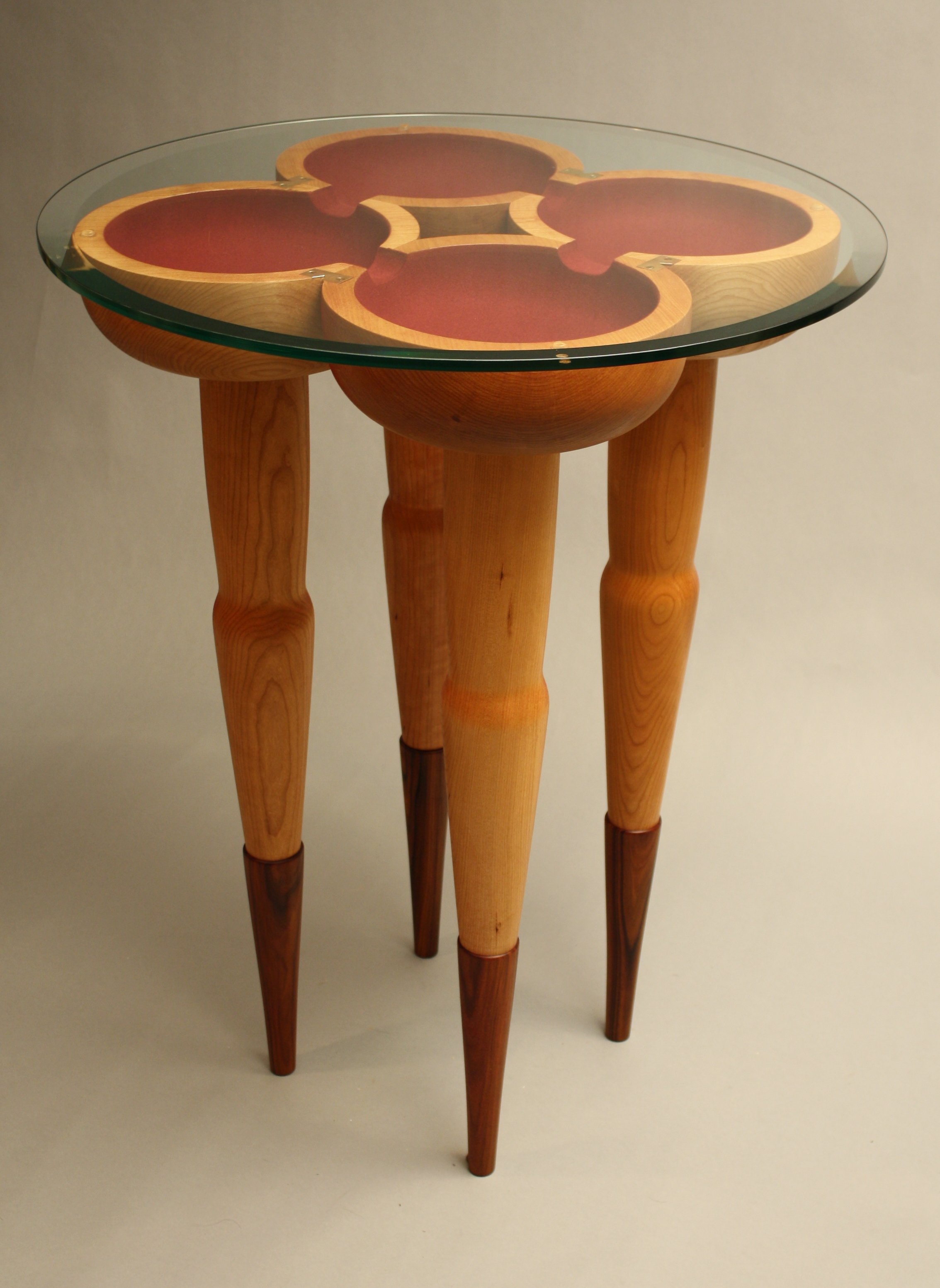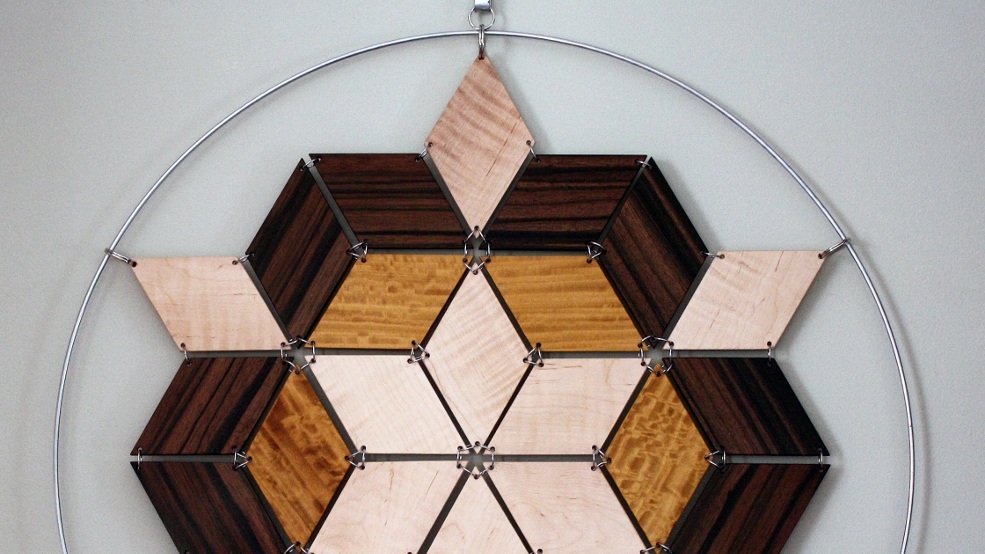Furniture with Attitude
In the past I have considered the term “functional sculpture” to be an adequate definition of my work, but have come to realize that it is an oxymoron. Purists insist that there is an ironclad wall between sculpture and functional objects. With sculpture, it is expected that all perception of a work should be done with the eyes only. Quite the opposite, my work often almost begs to be touched, sat upon, opened, caressed, and essentially interacted with. It is sculpture that is intended to have a function in the home beyond simply decoration — sculpture that takes a step beyond the traditional definition and asks to be somehow used, even if the function is minimal.
Form and Function
The basic nature of furniture demands that humans interact with it. A comfortable chair almost calls out to be sat in. A glass-fronted cabinet proudly organizes and displays what is inside for people to see and make a choice of what they need. A footstool is placed in an obvious relationship to a chair so that it invites one to rest their feet upon it. Beyond that, the use of furniture over time gains evidence of that interaction. During the time that I was commissioned to create additional copies of antique furniture for the clients of Sotheby’s, I was delighted to observe high quality repairs on originals and grew to appreciate the repairs as an integral part of those pieces which added to the value, history, and character. I came to realize that the evidence of use and occasionally abuse of furniture is what adds to the history of that piece and becomes an integral part of the story behind it. I welcome the same process to be part of my work. Unlike sculpture that remains behind barriers in the museum or atop a pedestal in the gallery, I want my work to bear the marks of becoming part of someones life and not erased unless it interferes with the intended function.
















